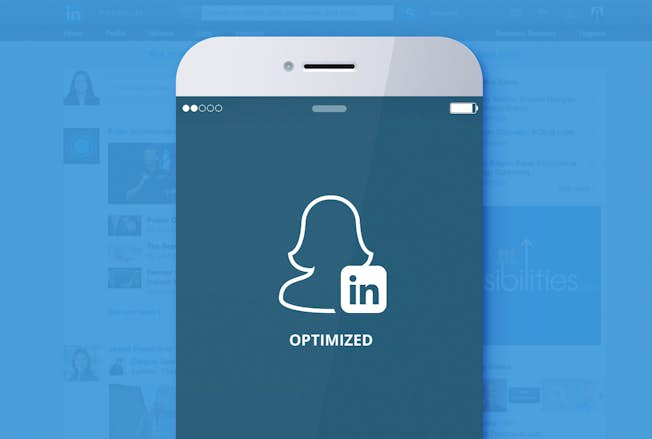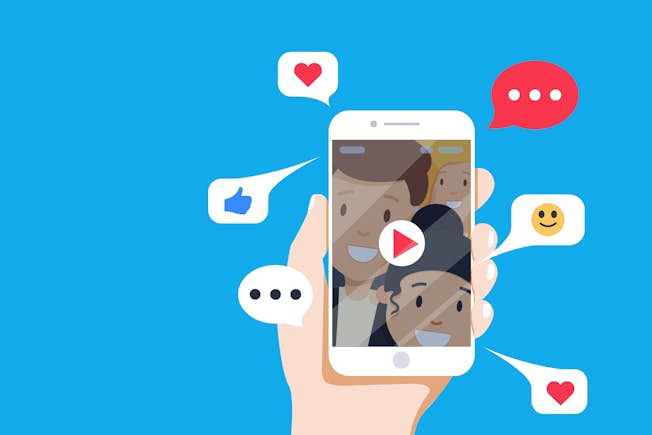Aug 27, 2018
3 Strategies to Generate B2B Pharma Leads from LinkedIn
The Basics
Before you take action in the realm of networking, you should make sure you have the basics down in your LinkedIn profile. It should be complete and specific, with your “elevator pitch” in plain view. If you’re doing a lot of outreach, you need your contacts to know exactly who you are and what you’re doing in the blink of an eye.
Your description should also be succinct, highlight unique specialty focuses, and be close to the top of your profile so that it’s in plain view for people to see when they check it out.
Remember that your personal branding matters as much as the company you represent.
This may go without saying, but you should always have a professional headshot as part of your LinkedIn profile, and you can even take it a step further with an introductory or informative video which highlights not only your skills but your professional goals and mission. You may even want to include video footage from you speaking at a professional event. Anything that demonstrates your expertise should be in plain view on your profile.
The next step is to create a company LinkedIn page instead of making people go to your website, as that one extra step may prevent leads from becoming sales. This is especially important if you’re working on brand awareness activities.
1. Use LinkedIn Groups Strategically

One of the reasons that LinkedIn works so well is that it allows you to easily engage with other professionals in your field.
LinkedIn groups work in a similar way as Facebook groups but with the extra focus on professional-level networking, they can be even more effective for lead generation, and some of them are huge – for instance, there are over 115,000 people in the Pharmaceutical Marketing Group, and that’s just one of the thousands on the platform.
In fact, you may even want to consider joining a smaller group to get a more personal feel or if you are promoting specialty products. The other important thing to note is that a group that is big does not mean it’s active – be sure to choose something that has a lot going on.
Group Etiquette
Networking in LinkedIn groups (just like any other forum or social media group) requires a certain level of sensitivity and conscientiousness. It’s important that you aren’t joining a given group just for the purpose of promoting a product, for instance. When you go into a group, be sure to go in with a valuable offering and some useful engagement tactics that will allow relationships to grow somewhat organically – sometimes these truly are the contacts that have the potential to last a lifetime.
You’ll also want to have a clear understanding of the group’s purpose before entering into the group at all. For instance, some are more like professional clubs and others are more for knowledge building and informal networking. The more you can offer in the way of on-point information, knowledge or valuable services, the better chance you have of being seen as a genuine expert.
It’s also important that you stay clear of the temptation to use scheduling tools to post articles and other media in groups in an automated way. Be careful about comments and posts because if you get kicked out you could be penalized – never promote and always make sure you understand the purpose, rules, and guidelines in the group.
Not only is it just proper etiquette to add something of value, it’s important to note that too much self-promotion can get you kicked out of the groups – be sure to read the group policies before you go in and establish a reason for being there that goes beyond selling.
2. Use LinkedIn Tools and Features
LinkedIn has plenty of built-in features as well as compatible tools that you can use to help you manage contacts, keep track of leads and aggregate data, just to name a few things. Here are a few examples:
Advanced People Search
Advanced People Search allows you to look within a specific industry to find people with exact specifications, skills or descriptors as well as in key locations.
LinkedIn Plugins
Plugins can be specifically incorporated into your website to improve overall functionality and build networks with traffic being more directed to your website.
You can use plugins such as share, follow company, and member profile to share with visitors on your site to allow them to understand what you’re all about from a professional (rather than marketing) standpoint, or for client traffic that comes to your website first but wants to connect professionally.
LinkedIn Pulse
The most basic and useful thing that you can do as a pharma professional is tune into your LinkedIn Pulse Pharmaceutical stream and contribute valuable, informative articles for your audience, as well as keep on top of trending issues.
SlideShare
SlideShare lets you easily create and share professional-level presentations to your audience. This is a super unique feature which is typically easy to use even if you’re not overly tech savvy. It basically works like a PowerPoint presentation, and you can import existing presentations from there too. So, posting a presentation from your last conference or event is a super simple way of repurposing content and getting some important attention.
One of the best things about sharing your slideshows on LinkedIn is that slides are also automatically incorporated into SEO because they have transcripts associated with them. So, it’s worth it to tweak your slides before you upload, ensuring that they are focused on relevant and trending topics, when possible. This is a simple way of getting external traffic to your LinkedIn company profile.
Another great thing about SlideShare is that you can easily embed presentations on existing websites. One of the few drawbacks, however, is that this is for fairly simple types of presentations and features such as animations are not supported.
Advanced Searches/Saved Searches
LinkedIn makes it super easy to conduct outreach activities by specific interest or even industry categories.
Using advanced and saved searches allows you to receive alerts in your inbox based on specific search parameters, which may include anything from location to industry, school, language, and interests. And the best thing is that you can do this even without premium or pro versions.
LinkedIn Sales Navigator
If you’re doing anything B2B on LinkedIn, you must not overlook Sales Navigator. This is a simple feature that helps you easily find leads, track your contacts, and get a better sense of client needs in order to engage more authentically. It even offers real-time updates and tells you who has seen your profile. You can also connect it with Lead Builder to follow up with your prospects later.
There is also a Sales Navigator for Gmail which is Chrome-compatible and gathers massive amounts of data in a short period of time, allowing you to keep detailed information about LinkedIn leads in your Gmail interface.
3. Create Valuable Content

LinkedIn makes it super easy for you to get yourself visible via simple content creation tools that are automatically incorporated into your feed when you publish. You can easily share texts, links and more directly from your feed and connect it all to your company profile and website as well.
Articles should be written in an informative and non-promotional way, and you can easily re-share articles that you’ve posted on your blog or other personal blogs sites like Medium. You may also repost summaries or introductions that lead clients to other articles you’ve published in reputable health publications.
Use the LinkedIn publishing platform to publish posts that mention key contacts and trending topics in order to ensure that they are found via SEO. You can also tag key contacts in your posts as a means of engaging, which will prompt them to comment and (hopefully) re-share your articles.
Best Practices for Pharma Content
Here are a few things to bear in mind as you publish content on LinkedIn.
For one thing, it’s important to reconsider publishing advertorial materials such as press releases and instead turn to content that will truly add value to their lives. Consider writing articles that are inspiring, relatable, and demonstrate the human or healing elements of your service or product.
And of course, be sure to abide by the ABPI regulations with every piece of content or information you’re giving out.
Final Thoughts
You don’t need to do anything fancy to build a solid network and create lasting relationships – LinkedIn has it all right there for you, and there are plenty of easily accessible tools to purchase that are compatible with LinkedIn and can synthesize and sync contact data at the blink of an eye.
No matter which route you choose, you need to make sure you’re conscientious about the information you’re giving out while demonstrating your authority and making meaningful connections.
- Categories:
- Articles
- Digital Strategy
- Social Media Marketing
Upgrade to Power Membership to continue
your access to thousands of articles, toolkits, podcasts, lessons and much much more.
Become a Power Member- Login
- View Courses
- - - -
- Courses
- Resources
- - - -
- My Account
- Change Password
- Logout




